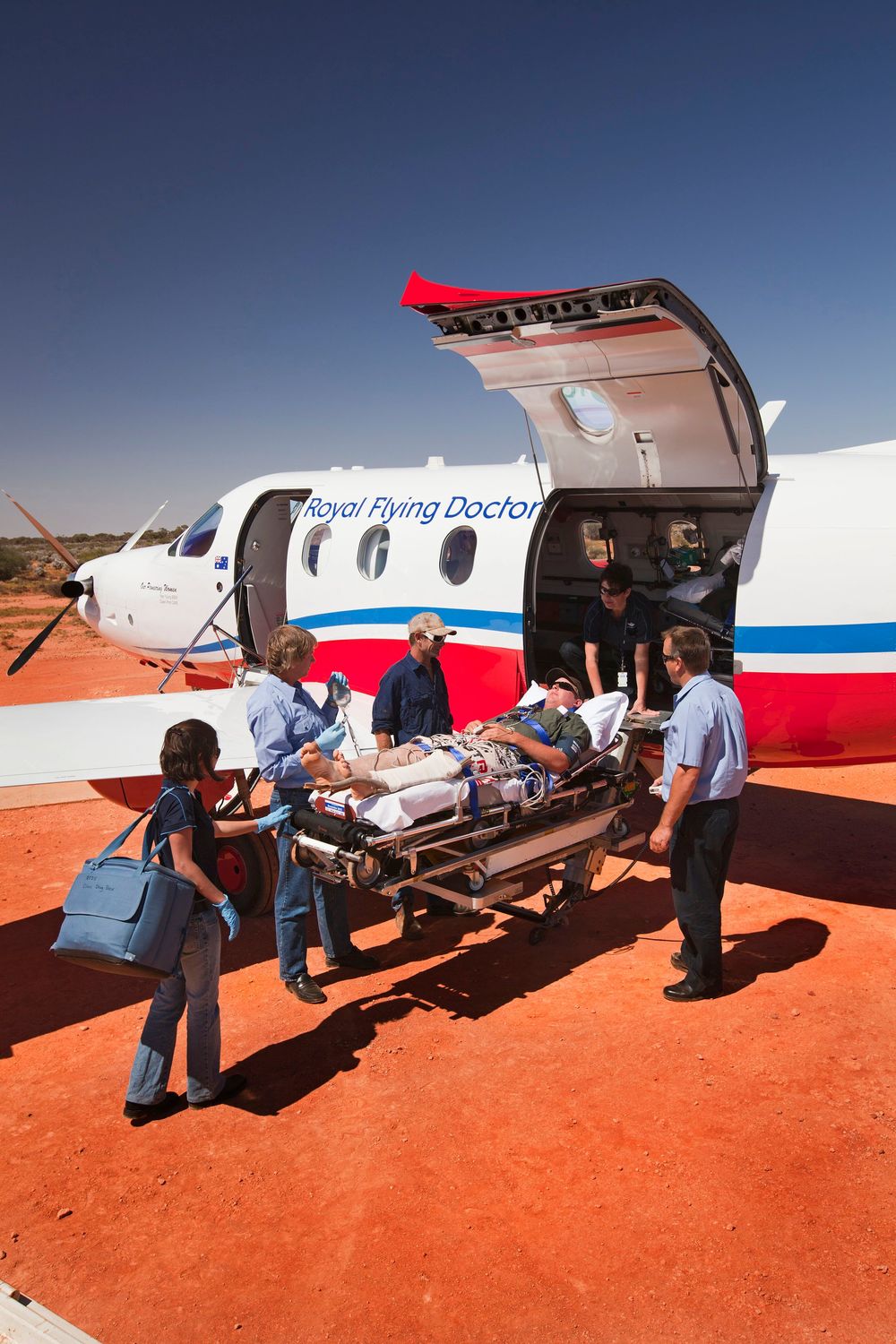RFDS weigh in on what’s Best for the Bush
Lucy Kirk
06 February 2023, 8:40 PM
 The Royal Flying Doctor Service have today released a research report series, entitled Best for the Bush, Rural and remote Health Base Line 2022 to draw attention to service gaps.
The Royal Flying Doctor Service have today released a research report series, entitled Best for the Bush, Rural and remote Health Base Line 2022 to draw attention to service gaps.Hot on the heels of the release of the Australian Government’s Strengthening Medicare Taskforce report, the Royal Flying Doctor Service have today released a research report series - entitled Best for the Bush, Rural and remote Health Base Line 2022 - drawing attention to service gaps.
The RFDS report pulls no punches when it comes to pointing out the harsh reality when it comes to accessing health services in country areas.
'Rural and remote Australians are more likely to die at a younger age from diseases than people living elsewhere in Australia,' the report states.
'Higher prevalence of modifiable risk factors, coupled with poorer access to services and increased burden of disease in rural and remote areas, is directly contributing to more avoidable deaths and a lower life expectancy in rural and remote communities.'
According to the report, age-standardised death (mortality) rates in 2020 increased with the degree of remoteness for both males and females.
Men living in very remote areas had a mortality rate 1.3 times higher than those living in major cities while women in very remote areas had a mortality rate 1.5 times as high as their sisters living in major cities.

“All Australians should expect reasonable access to primary healthcare services no matter where they live”, says Frank Quinlan, Federation Executive Director of the Royal Flying Doctor Service.
“For Australians living in rural, remote and regional Australia, access to simple services such as a nurse-led clinic, a GP, a dentist or a specialist is much, much harder.”
The report presents the latest data on the health of rural and remote Australians alongside RFDS aeromedical retrieval data and evidence on service gaps.
It also identifies the issues that most urgently need attention from service providers, funders and policy makers, while also making recommendations for the RFDS to pursue together with governments, industry, rural and remote communities.
To demonstrate the difficulty for rural and regional Australians to access primary care, the report highlighted a harsh inequity that the Strengthening Medicare Taskforce report appeared to overlook.
The Australian Institute of Health and Welfare proposed that one measure of reasonable access is that, at a minimum, people should be able to access health services within a 60-minute drive time.
Using this as a simple proxy measurement, the RFDS Best for the Bush report found:
- 44,930 people, have no access to local primary health care services;
- 57,899 people have no access to a local GP;
- 208,247 people have no access to local nurse-led clinics;
- 118,943 people have no access to local dental; and
- 134,851 people have no access to local mental health services.
“As we look to reform Medicare across the country, we need to deploy creative models of integrated, multi-disciplinary team based primary care for people living outside the reach of mainstream services, who mainly rely on services outside the Medicare system,” said Mr Quinlan.
The Strengthening Medicare Taskforce report recognised that “rural and remote communities need rural and remote solutions,” and recommends developing new funding models that are locally relevant for sustainable rural and remote practice in collaboration with people, providers and communities.
Minister for Health and Aged Care, Mark Butler acknowledged the emphasis the report was putting on rural and remote communities during his press conference on February 3.
“Sustainable models of care for rural and regional Australian communities that have really been at the pointy end of the crisis in general practice [is a recommendation].”
“As happens in so many government service areas, they experience those shortages and those gaps in services that are now afflicting big parts of our major cities as well.”
The RFDS are hopeful that the Best for the Bush report can bring government, service partners and communities together to deliver innovative, patient-centered solutions to solve these problems and ensure better health outcomes for rural and remote communities.

The Royal Flying Doctor Service (RFDS) are hopeful that the Best for the Bush report can bring government, service partners and communities together to deliver innovative, patient-centered solutions to improve health outcomes for rural and regional Australians.
“Working alongside government, service partners and communities, this Best for the Bush Report is a continuation of the RFDS’ long term commitment to delivering evidence-based healthcare in regional, rural and remote Australia”, said Mr Quinlan.
“This will only be achieved through accessible primary healthcare”.
You can access the full Best for the Bush Rural and Remote Health Base Line 2022research paper here.
The Strengthening Medicare Taskforce Report can be accessed here.



